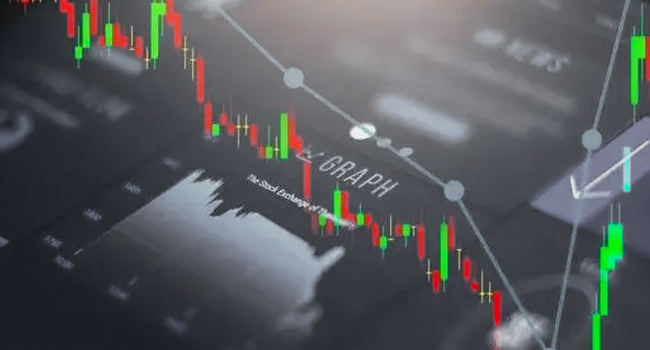How to Open a Forex Trading Account: A Step-by-Step Tutorial
Forex trading, or foreign exchange trading, allows individuals to participate in the global currency market. It’s an exciting and potentially profitable endeavor, but it’s crucial to start with the proper knowledge and approach. By the end of this article, you will be well-equipped to take your first steps into Forex trading.
Understanding Forex
Before you dive into opening a Forex trading account, it’s essential to grasp the basics of the Forex market. Unlike other financial needs, Forex operates 24 hours a day, five days a week, and it’s decentralized, which means there is no central exchange. This market offers traders the opportunity to profit from fluctuations in currency prices.
Importance of a Forex Trading Account
To engage in Forex trading, you’ll need a Forex trading account, which serves as your gateway to the market. Having your trading account provides you with the flexibility to trade at your convenience and implement your trading strategies.
Preparing to Open a Forex Trading Account
Setting Clear Financial Goals
Before opening a Forex trading account, it’s crucial to set clear financial goals. Determine why you want to trade and what you aim to achieve. Are you looking for short-term gains, long-term investments, or portfolio diversification? Establishing clear objectives will guide your trading decisions.
Risk Tolerance Assessment
Another critical aspect of preparation is assessing your risk tolerance. Understand how much risk you will take on each trade and set appropriate risk management measures. This will help protect your capital and prevent significant losses.
Selecting a Reliable Forex Broker
Choosing the right Forex broker is a pivotal step in your trading journey. A reliable broker can provide the necessary tools, support, and security for successful trading. Here’s how to go about it:
Researching Broker Options
Start by researching different Forex brokers. Look for brokers with a good reputation and track record. Read reviews and seek recommendations from experienced traders to make an informed decision.
Regulatory Compliance
Ensure that a relevant financial authority regulates the broker you choose. Regulation protects your funds and ensures that the broker follows industry standards.
Step-by-Step Tutorial for Opening a Forex Trading Account
Now that you’ve prepared and selected a broker, it’s time to open your Forex trading account. Follow these steps:
Creating an Account
Visit your chosen broker’s website and sign up for an account. You must provide personal information and agree to the broker’s terms and conditions.
Account Verification
Complete the verification process by submitting the necessary documents, such as your identification and proof of address.
Funding Your Account
You can fill your account with the money you’re prepared to trade when it has been validated. Most brokers offer funding options, including bank transfers, credit cards, and electronic payment.
Using Trading Platforms
Forex brokers typically provide trading platforms that you can use to execute your trades. It’s essential to familiarize yourself with the platform’s features and interface.
Introduction to Trading Platforms
Learn about the basic functionalities of the trading platform, including how to open and close positions, set stop-loss and take-profit orders, and access real-time market data.
Navigating the Interface
Explore the platform’s user interface to find essential tools such as charts, technical indicators, and economic calendars.
Making Your First Trade
Now that you have funded your account and are comfortable with the trading platform, it’s time to make your first trade.
Market Orders vs. Limit Orders
Recognize the distinction between limit orders, which are aimed at a certain price you specify, and market orders, which are executed instantly at the going rate.
Monitoring and Managing Your Trades
As a Forex trader, you must keep a close eye on your positions and manage them effectively.
Keeping Track of Positions
Use the trading platform to monitor your open positions and review your trading activity regularly.
Setting Stop-Loss and Take-Profit Orders
Adjust your stop-loss and take-profit orders to respond to market conditions and protect your gains.
Developing a Trading Strategy
A successful Forex trader follows a well-defined trading strategy. Consider both technical and fundamental analysis when creating your approach.
Technical Analysis
Utilize technical analysis tools to identify potential entry and exit points based on price patterns, trends, and indicators.
Fundamental Analysis
Stay informed about economic events and news that can impact currency prices and use this information to make informed trading decisions.
Learning from Experience
Forex trading is a continuous learning process. Here’s how you can improve your skills and knowledge over time.
Risks and Rewards of Forex Trading
Forex trading offers significant potential rewards but also comes with risks that you should be aware of.
Potential Profits vs. Losses
Forex trading can yield substantial profits, but it’s important to remember that losses are also part of the game. Be prepared to manage both wins and losses with a rational and disciplined approach. Avoid chasing quick gains, and always stick to your trading strategy.
Staying Informed about Market News
To make informed trading decisions, you need to stay updated on economic events and news that can influence currency prices.
Economic Calendar
Learn to use an economic calendar, which details impending economic events, including GDP releases, interest rate decisions, and employment data releases. These events can cause significant market volatility.
News and Analysis Sources
Follow reputable financial news sources and market analysis to understand the factors driving market movements. Staying informed will help you anticipate potential market shifts.
Psychological Aspects of Trading
Trading is not just about numbers; it’s also about managing your emotions and maintaining discipline.
Emotions and Trading
Impulsive judgments and losses might result from emotions such as fear and greed. Learn to control your emotions and stick to your trading plan.
Maintaining Discipline
Discipline is the key to successful trading. Establish clear rules for your trading strategy and adhere to them, even when the market is turbulent.
Common Pitfalls to Avoid
Avoiding common trading pitfalls is crucial for your success as a Forex trader.
Overtrading
Overtrading, or trading too frequently or with substantial positions, can deplete your account quickly.
Ignoring Risk Management
Neglecting risk management measures, such as setting stop-loss orders, can lead to significant losses. Protect your capital by managing risk effectively.
Taxation and Record-Keeping
Remember the legal and financial aspects of Forex trading.
Tax Implications
Recognize the tax ramifications of Forex trading in your nation and adhere to tax laws. It’s essential to keep accurate records of your trading activity for tax purposes.
Documenting Trades
Maintain detailed records of all your trades, including entry and exit points, order types, and the reasons behind your trading decisions. This documentation is valuable for analyzing your performance and improving your strategy.
Conclusion
Opening a Forex trading account and becoming a successful trader is a journey that requires dedication and continuous learning. By following this step-by-step tutorial, you have laid a strong foundation for your trading career. Stay disciplined, manage risk effectively, and learn from your experiences to improve your trading skills. Forex trading, the potential for financial growth is significant, but it’s essential to approach it with caution, diligence, and an unwavering commitment to your trading plan.
FAQs
Is Forex trading suitable for beginners?
Forex trading can be suitable for beginners if they are willing to invest time in learning and practice.
What is the minimum capital required to start Forex trading?
Depending on your broker and the kind of trading account you have, the minimum capital need may change. Some brokers offer accounts with as little as $100, while others may require more substantial initial deposits.
Is it possible to trade Forex full-time?
Yes, some traders choose to trade Forex full-time. However, it’s crucial to have a well-established trading strategy, risk management skills, and financial stability before considering full-time trading.
How can I mitigate the risks associated with Forex trading?
Mitigating risks in Forex trading involves using stop-loss orders, setting a risk-to-reward ratio, and avoiding overleveraging. Continuous education and disciplined trading also play a vital role in risk management.
Are there any tax advantages to Forex trading?
The tax advantages of Forex trading can vary by country. It’s essential to consult with a tax professional to understand the specific tax implications of Forex trading in your location.


